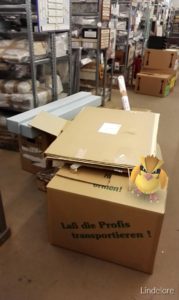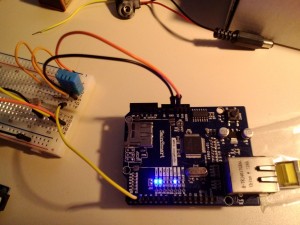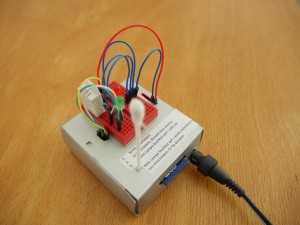Last week there were several sightings of a new pest. Colleagues especially from the U.S. and Germany reported having spotted unknown species in their galleries and storage areas. Even the administrator of this page was not spared, see the picture.
The odd thing is that this new pest seems to be only detectable by using smartphones or tablets. They seem to pass sticky traps unhindered. So far, museumpests.net has not listed them.

Pokemon in the admin’s storage area1
So far there was no immediate damage to collections reported. However, as registrars and collections managers we stand on guard. Some interns and student assistants pointed out that these pests can be trained and become much stronger, which doesn’t sound good. But they also pointed out that the real problem might be the trainers who want to catch more “pokémon” and therefore tend to ignore their own safety and the safety of their surroundings.
Being aware that we still do not know the extend of this new infestation, nor if it causes damage to collections, we at Registrar Trek have collected some recommendations on an new IPM – Integrated Pokémon Management:
- The trainers catching these “pokémon” might not be fully aware of their surroundings – remind them in an appropriate and polite way that they have to follow your house rules and respect the safekeeping measurements for your objects and fellow visitors.
- If there are serious issues with a gathering place of those creatures (“pokestops”) or places where trainers meet for challenges (“gyms”), you can report them on this website: https://support.pokemongo.nianticlabs.com/hc/en-us/articles/221968408-Reporting-Pok%C3%A9Stop-or-Gym-Issues, i.e. you can ask for having them removed from the game.
- As there are now a couple of people in the vicinity of your museum that might not be the typical visitors but maybe an audience you like to involve more – how about talking to them, learning what they are interested in and inviting them inside? How about a reduced entrance fee for pokémon trainers that are first time visitors? (unlike pokémon, you don’t have to catch them all, but attracting a few would be an idea…).
We keep watching this new phenomenon and might inform you on further ideas for Integrated Pokémon Management.
Angela
- Note that some of the boxes in the picture are positioned directly on the ground, which is NOT how you should store them. Unfortunately, the pokémon decided to pop up where we were preparing some objects for transportation, so you can see a collections management fail at the same time. Always level your boxes above ground, so they won’t be damaged by water or feet, folks! ↩



